And then... there were none.
We breathe
may the force be with you
Copyright © Demetrios the Traveler
έγραψε ο
brexians
στις
17:21
0
σχολίασαν
![]()
έγραψε ο
brexians
στις
17:18
0
σχολίασαν
![]()
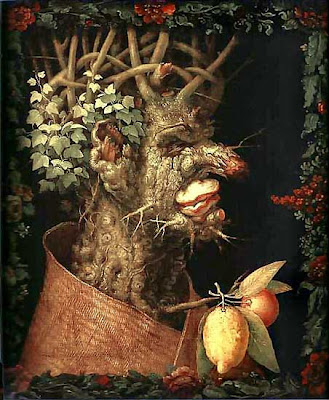

Ηλιοστάσιο ή Τροπή ονομάζονται τα δύο σημεία της εκλειπτικής στα οποία βρίσκεται ο Ήλιος στις 22 Ιουνίου (Θερινό Ηλιοστάσιο) και 22 Δεκεμβρίου (Χειμερινό Ηλιοστάσιο), στα οποία έχει τη μεγαλύτερη και τη μικρότερη απόκλιση του: 23 27' και -23 27', αντίστοιχα. Όταν ο Ήλιος βρίσκεται στα Ηλιοστάσια φαίνεται σα να έχει σταθερή θέση ως προς την απόκλισή του. Εκεί οφείλεται το όνομα "ηλιοστάσιο". Ενώ το όνομα "Τροπή" οφείλεται στο γεγονός ότι ο Ήλιος αλλάζει φορά κίνησης, διότι ενώ τις προηγούμενες μέρες πριν το θερινό ηλιοστάσιο, για παράδειγμα, έχει ανοδική πορεία, στις επόμενες του θερινού ηλιοστασίου έχει καθοδική. Η ευθεία που ενώνει τα δύο ηλιοστάσια λέγεται γραμμή των τροπών και είναι κάθετη στη γραμμή των ισημεριών.
ΔΩΔΕΚΑΘΕΙΣΤΕΣ Η Εκκλησία των Ελλήνων στο θρήσκευμα αποστέλλει,
Η Εκκλησία των Ελλήνων στο θρήσκευμα αποστέλλει,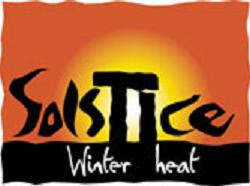
ΠΑΓΑΝΙΣΤΕΣ
ΤΑ ΧΡΙΣΤΟΥΓΕΝΝΑ ΕΙΝΑΙ ΕΟΡΤΑΣΜΟΙ ΠΑΓΑΝΙΣΤΙΚΟΙ!
Η 25η Δεκεμβρίου συμπίπτει παραδοσιακά με το χειμερινό ηλιοστάσιο,
δηλαδή με τη νύχτα με τη μεγαλύτερη διάρκεια.
Η επόμενη νύχτα είναι θεωρητικά μικρότερη για κάποια δευτερόλεπτα,
καθώς ο ήλιος ανατέλλει νωρίτερα και δύει αργότερα, ενώ μέχρι την ημερομηνία αυτή συμβαίνει το αντίθετο (λόγω όμως των εκατοντάδων χρόνων που έχουν περάσει από την καθιέρωση της ημερομηνίας αυτής, αυτή δεν είναι πια σωστή, καθώς μετακινείται αργά ¾η ακριβής ημερομηνία του χειμερινού ηλιοστασίου του 1999 είναι το ξημέρωμα της 22ης Δεκεμβρίου).
Όλοι οι πολιτισμοί είχαν καθιερώσει γιορτές για αυτή την ημερομηνία, καθώς πίστευαν πως είναι η μέρα της ανάστασης του ηλιακού θεού.
Η αρχαιότερη απόδειξη της σημαντικότητας της ημερομηνίας αυτής, για τους αρχαίους λαούς, είναι το μεγαλιθικό μνημείο του Newgrange στην Ιρλανδία, το οποίο θεωρείται παλιότερο από τις πυραμίδες και είναι ένα κυκλικό πέτρινο κατασκεύασμα απίστευτης τεχνικής.
Φτιαγμένο, υποτίθεται, από πρωτόγονους, είναι παρόλα αυτά έτσι χτισμένο, που ο κεντρικός του θάλαμος φωτίζεται κάθε χειμερινό ηλιοστάσιο και μόνο. Η ακτίνα του ήλιου περνά μέσα από πολλά μέτρα πέτρας και φωτίζει μια λεκάνη στολισμένη με ηλιακά σύμβολα και σπείρες.
Σήμερα δε γνωρίζουμε ποιο σκοπό εξυπηρετούσε και τον τρόπο με τον οποίο κατασκευάστηκε. Οι Σουμέριοι και οι Μεσοποτάμιοι γιόρταζαν το ηλιοστάσιο σαν την ημέρα της μάχης του Μαρντούκ με τις δυνάμεις του Χάους. Επειδή, μάλιστα, η παράδοση απαιτούσε, την αυτοκτονία του βασιλιά τους για να «μεταφερθεί» στο πλευρό του Μαρντούκ και να τον βοηθήσει, ανακήρυτταν βασιλιά τους για την περίοδο του δωδεκαήμερου κάποιον τυχαίο
και αφού του πρόσφεραν βασιλικές τιμές, τον έσφαζαν τη δωδέκατη μέρα τελετουργικά.
Οι Βαβυλώνιοι και οι Πέρσες εκτελούσαν την ίδια περίοδο παρόμοιους εορτασμούς,
στους οποίους οι άρχοντες και οι δούλοι άλλαζαν τίτλους.
Οι Σκανδιναβοί, που αντιμετώπιζαν νύχτες μεγαλύτερες από 25 ώρες(!), γιόρταζαν το Yuletide, κατά το οποίο οι κυνηγοί έφευγαν στα ψηλά βουνά, για να δουν πρώτοι την επιστροφή του Ήλιου που είχε χαθεί για μεγάλο χρονικό διάστημα.
Ο πρώτος που θα την αντίκριζε έφερνε τα καλά νέα στους καταυλισμούς και ήταν επικεφαλής στο πλούσιο γλέντι που διοργανωνόταν στην επιστροφή του.
Στα ίδια μέρη του Βορρά, έδεναν μήλα στα κλαδιά των δέντρων για να υπενθυμίζουν πως η άνοιξη θα γυρίσει, ξεκινώντας ίσως έτσι την παράδοση του χριστουγεννιάτικου δέντρου.
Δεν ήταν μόνο ο Χριστός και ο Μίθρας ηλιακοί θεοί που λέγεται πως γεννήθηκαν τη μέρα αυτή, αλλά και ο Όσιρις, ο Ώρος, ο Διόνυσος, ο Άδωνις, ο Δίας και ο Jupiter, ο Tammuz, ο Ηρακλής και όλοι οι ηλιακοί ημίθεοι.
Η περσική μυστηριακή θρησκεία του Μίθρα, που μέχρι την επίσημη καθιέρωση του χριστιανισμού, ήταν η βασική θρησκεία των Ρωμαίων στρατιωτών, την ονόμαζε «Ημέρα της Γέννησης του Ήλιου».
Οι αρχαίοι Έλληνες και οι Ρωμαίοι γιόρταζαν την περίοδο αυτή τα Σατουρνάλια και τα Κρόνια, τις γιορτές που ήταν αφιερωμένες στο χθόνιο θεό της γης, τον Κρόνο.
Οι εορτάζοντες φώναζαν στους δρόμους «Ιώ Σατουρνάλια!», αντάλλασσαν δώρα και γλυκά και διοργάνωναν γλέντια με φαγητό.
Θεωρούσαν πως η εποχή της κυριαρχίας του Κρόνου ήταν η Χρυσή Εποχή της ζωής,
μια παραδείσια κατάσταση ευδαιμονίας, που την έκλεψε και τη σταμάτησε ο Δίας,
όταν μαχαίρωσε τον Κρόνο για να του αποσπάσει την εξουσία.
Σαν χθόνιος θεός, ο Κρόνος ήταν ταυτόχρονα και θεός του θανάτου και του σκότους.
Έτσι, οι εκδηλώσεις είχαν αρκετά σκοτεινά σημεία.
Σε συνδυασμό με τους εορτασμούς του Βάκχου Διόνυσου που γίνονταν την ίδια εποχή,
πολλοί «μετατρέπονταν» σε σάτυρους και κρατώντας τεράστιους φαλλούς, επιτίθονταν στους περαστικούς με σκοπό να τους τρομοκρατήσουν.
Η υποχρεωτική δωροδοκία ήταν ο κανόνας, για να τους αφήσουν τελικά στην ησυχία τους.
Ο σάτυρος, που μιμούνταν τον Βάκχο, υποδυόταν την εμφάνιση που σήμερα θεωρούμε μορφή του διαβόλου: φορούσε κέρατα, τριχωτά ενδύματα, προβιές και οπλές κατσίκας.
Η «τραγωδία», τα τραγούδια των τράγων δηλαδή, ήταν στην πρώτη τους μορφή μέρη των πρωτόγονων αυτών εορτασμών.
Αν νομίζετε πως τελικά εξαφανίστηκαν με την έλευση του χριστιανισμού,
έχετε μεγάλο λάθος!
Θα σας περιγράψω το τυπικό που ακολουθούσαν πχ. έξω από τη Θεσσαλονίκη, στα Κουφάλια μέχρι πρόσφατα, το 1950: Τις μέρες των Χριστουγέννων, τα παιδιά έπαιρναν ξύλα στα χέρια τους και έβγαιναν στους δρόμους φωνάζοντας «Κόλιεντα!» (Κόλεντα ή Κόλιεντα ονομάζονταν και οι σλάβικες τελετές προς τιμή του Τρίγκλαβ, που σημαίνει Τρικέφαλος). Μετά χτυπούσαν τις πόρτες των σπιτιών και απαιτούσαν φιλοδώρημα, απειλώντας τους σπιτονοικοκύρηδες με το ποιηματάκι αυτό: «Δώσε μπάμπω μια κουρούδα (μπισκότο ή κουλούρι ή γλύκισμα) μη σε βγάλ’ απ’ την καμινούδα (καμινάδα)», που φυσικά συσχετίζεται με την δοξασία πως η καμινάδα κρύβει μια μαγική είσοδο-έξοδο.
Μετά όμως οι μεγαλύτεροι σε ηλικία εκδικούνταν τα παιδιά, καθώς ντύνονταν «καμήλες», φορούσαν κακομούτσουνες στολές με δερμάτινες μάσκες και κουδούνια και τρομοκρατούσαν τα μικρά παιδιά, απαιτώντας χρήματα.
Παρόμοιες παραδόσεις κρατούσαν σε όλη την Ευρώπη σε κάθε τόπο, παραδόσεις που σταμάτησαν ξαφνικά καθώς τα Χριστούγεννα μετατράπηκαν στην αμερικανική έκδοσή τους, που είναι στο μεγαλύτερο μέρος της κατασκευασμένη για εμπορικούς σκοπούς.
Ο Μέγας Κωνσταντίνος, που επέβαλε το χριστιανισμό έχοντας μόνο πολιτικούς σκοπούς,
στην προσπάθειά του να σιγάσει τους εορτασμούς του Μίθρα που συνεχίζονταν κρυφά και μετά την επιβολή του χριστιανισμού, διέταξε το 336 μ.Χ. τον επίσκοπο της Ρώμης, Ιούλιο Α΄, να επιβάλει την 25η Δεκεμβρίου σαν τη μέρα των Χριστουγέννων.
Ο σκοπός του ήταν να «υπεξαιρέσει» τους εορτασμούς των Μιθραϊστών και των υπόλοιπων παγανιστών, επειδή δεν μπορούσε να τους σταματήσει με άλλο τρόπο.
Αν είστε φανατικός χριστιανός και βυθίζεστε κάθε χρόνο στον υπερβατικό εορτασμό της γέννησης του Χριστού, καλό είναι να διατηρείτε και ένα σεβασμό προς το παγανιστικό,
λλά απελευθερωτικό και ευφάνταστο παρελθόν αυτής της περιόδου που παλεύει για την επιβίωσή του και τα καταφέρνει εδώ και χιλιάδες χρόνια…






 OI ΑΘΕΟΙ, ΟΙ ΑΓΝΩΣΤΙΚΙΣΤΕΣ ΚΑΙ ΟΙ ΓΝΩΣΤΙΚΟΙ.
OI ΑΘΕΟΙ, ΟΙ ΑΓΝΩΣΤΙΚΙΣΤΕΣ ΚΑΙ ΟΙ ΓΝΩΣΤΙΚΟΙ.
έγραψε ο
brexians
στις
14:24
2
σχολίασαν
![]()

ΠΩΣ Ο ΙΔΙΟΣ ΠΕΡΙΓΡΑΦΕΙ ΤΟΝ ΕΑΥΤΟ ΤΟΥ.
In the raised head, a hint of wing -
But the coat is flapping;
In the closed eyes, in the peace
of the arms: energy's pure hiding-place.
Here is a creature that can fly and sing,
The word malleable and flaming,
And congenital awkwardness is overcome
By inborn rhythm!

αυτοί οι στίχοι τον οδήγησαν στον θάνατο, μετά απο προδοσία ενός συγγραφέα του κύκλου Πάστερνακ...
αφιερωμένο στον μεγάλο πατερούλη, τον μεγάλο τιμονίερη, στο αστέρι της ΕΣΣΔ.
We live. We are not sure our land is under us. Ten feet away, no one hears us. But wherever there's even a half-conversation, we remember the Kremlin s mountaineer. His thick fingers are fat as worms, his words reliable as ten pound weights. His boot tops shine, his cockroach mustache is laughing. About him, the great, his thin-necked, drained advisors. He plays with them. He is happy with half-men around him. They make touching and funny animal sounds. He alone talks Russian. One after another, his sentences like horseshoes! He pounds them out. He always hits the nail, the balls. After each death, he is like a Georgian tribesman, putting a raspberry in his mouth.


έγραψε ο
brexians
στις
10:30
3
σχολίασαν
![]()




Carl Edward Sagan (Νοεμβριος 9, 1934 - Δεκεμβριος 20, 1996) Αμερικανός αστρονόμος και ερευνητής. Πρωτοπόρος της Εξω-Βιολογίας, ίδρυσε το κεντρο αναζήτησης εξωγήϊνης νοημοσήνης(SETI). Εγινε γνωστός για τα βιβλία του εκλαϊκευμένης επιστήμης (popular science) και την τηλεοπτική σειρά ΚΟΣΜΟΣ (http://en.wikipedia.org/wiki/Cosmos:_A_Personal_Voyage), την οποία έγραφε και παρουσίαζε. Στα έργα του συνηγορεί υπέρ της αθείας και της επιστημονικής μεθόδου (http://en.wikipedia.org/wiki/Scientific_method).
έγραψε ο
brexians
στις
16:53
1 σχολίασαν
![]()


σχολια καλιτεχνη:
My imagery is about discovery.
It takes me to places I have
never been, places that free
me from the pressures of a
clock driven world, places
that heal. I'm most excited
when in tune with the
underlying flow and energy of
the ordinary. I seek to reveal
the essence of a moment or
place gone unnoticed. I love
showing things in new ways,
using the elements of
surprise, mystery and
playfulness, fused with design
and movement.
έγραψε ο
brexians
στις
14:04
1 σχολίασαν
![]()

Καλά πόσο μυαλό κουβαλάτε, στο ΕΣΡ;
Είστε με τα καλά σας;
Τον Μπομπ Σφουγγαρακη κόψατε ;
Γιατί δεν κόβατε τον άλλον τον μακρυμάλλη τον τσαχπίνη με το κουστούμι και την μαντήλα που οπού σταθεί και οπού βρεθεί την ζητά και την συζητάει;
Η τον άλλο τον σεναριογράφο ηθοποιό, που με διθυράμβους λούζετε τα τελευταία δυο χρόνια!!!
Άντε και αυτοί βγαίνουν αργά στην τηλεόραση!!!!
(Με όλα τα πρωινάδικα και μεσημεριανά σκουπίδια να τους επαναλαμβάνουν.)
Όλες τις αδελφές ψυχές που τσιρίζουν και ξεκατινιάζονται, από πρωίας μέχρι "βαθύτατης νυκτός", έχοντας γνώμη, άποψη και λόγο επί παντός και επί όλων !!!
Θα τις κόψετε;
Ή θα τις αφήσετε να ανθίσουν και άλλο;
Το GAY κατεστημένο εσείς το επιβάλατε στο ελληνικό σπίτι!
Και τώρα υποκριτές χτυπάτε για να χτυπήσετε, επειδή στην αντίπερα όχθη του Ατλαντικού ο Μπαμπ Σφουγγαράκης "εκρίθη ένοχος", -και δεν πήρε χάρη όπως η γαλοπούλα-, άντε να του την ρίξουμε και εμείς!
Τι προσπαθείτε να μας πείτε ότι κάνετε έργο και δικαιολογούνται, τα λεφτά που βγάζετε;
Χτυπάτε το GAY κατεστημένο;
Τώρα;
Μην είναι πάρα πολύ αργά;
Μια μικρή μειονότητα περίπου 0,4% του ενήλικου πληθυσμού είναι!!
Και με τις πράξεις σας την δυναμώνετε και την κάνετε να φαίνετε 10%!!!!
Μήπως, λέω μήπως είστε ενεργά μέλη της GLT κοινότητας;
Για πείτε μας;
Πάρτε θέση;
Δεν είστε;
Δεν είναι κακή ούτε κατακριτέα, η στάση του καθενός μας προς τον έρωτα!!!!
Είναι κατακριτέα η στάση η δίκια σας, προς εμάς όλους που θέλουμε να ΔΟΥΜΕ ποιοτική τηλεόραση!
ΑΝΤΕ ΓΕΙΑ ΛΟΙΠΟΝ,
ΑΝΤΕ ΓΕΙΑ
έγραψε ο
brexians
στις
12:38
3
σχολίασαν
![]()
έγραψε ο
brexians
στις
11:44
1 σχολίασαν
![]()

New investigations into the code for life suggest the assumption that humans are genetically almost identical is wide of the mark, and the implications could be resounding.
Current thinking, inspired by the results five years ago from the Human Genome Project, is that the six billion humans alive today are 99.9 percent similar when it comes to genetic content and identity.
But major research work, published on Thursday, suggests we are genetically more diverse -- and the repercussions could be far-reaching for medical diagnosis, new drugs and the tale of human evolution itself.
Until now, analysis of the genome has focussed overwhelmingly on comparing flaws, or polymorphisms, in single "letters" in the chemical code for making and sustaining human life.
An international consortium of scientists has taken a different tack and believe they have uncovered a complex, higher-order variation in the code.
This better explains why some individuals are vulnerable to certain diseases and respond well to specific drugs, while counterparts swiftly fall sick or never respond to treatment, the authors believe.
Their focus has been to dig out deletions or duplications of code among relatively long sequences of individual DNA and then compare these so-called copy number variations (CNVs) across a range of volunteers of different ancestry.
The researchers were astonished to locate 1,447 CNVs in nearly 2,900 genes, or around one eighth of the human genetic code."Each one of us has a unique pattern of gains and losses of complete sections of DNA," said Matthew Hurles of Britain's Wellcome Trust Sanger Institute, one of the project's partners.
"One of the real surprises of these results was just how much of our DNA varies in copy number. We estimate this to be at least 12 percent of the genome."
"The copy number variation that researchers had seen before was simply the tip of the iceberg, while the bulk lay submerged, undetected. We now appreciate the immense contribution of this phenomenon to genetic differences between individuals.
"Some of the missing or duplicated stretches are very long, suggesting that, like backroom switches in a protein factory, CNVs must have a big impact on gene expression.
Nearly 16 percent of genes that are known to be related to disease have CNVs, the group found.
These include genes involved in rare genetic disorders such as DiGeorge, Williams-Beuren and Prader-Willi syndromes and those linked with schizophrenia, cataracts, spinal muscular atrophy and atherosclerosis.
But kidney disease, Parkinson's, Alzheimer's and vulnerability to malaria and the human immunodeficiency virus (HIV), which recent research has blamed on single-letter variations in the gene code, may also well be rooted in CNVs, the doctors believe.
"The stage is set for global studies to explore anew... the clinical significance of human variation," said Huntington Willard and Kevin Shianna of the Institute for Genome and Science Policy at Duke University in North Carolina, in a review of the research.
Evolution is another area that will come under new scrutiny.
The "Out of Africa" scenario, by which Homo sapiens emerged from east Africa and spread around the globe, will not be challenged, though.
Our origins are so recent that the vast majority of CNVs, around 89 percent, was found to be shared among the 269 people who volunteered blood as samples for the study.
These individuals included Japanese from Tokyo, Han Chinese from Beijing, Yoruba from Nigeria and Americans of Northern and Western European ancestry.
All the same, there are widespread differences in CNVs according to the three geographical origins of the samples.
This implies that, over the last 200,000 years or so, subtle variants have arisen in the genome to allow different populations of humans adapt to their different environments, Wellcome Trust Sanger said in a press release.
The research, which appears in the British journal Nature, is based on two technical breakthroughs, one in faster, accurate sequencing of DNA and the other in a powerful software programme to spot the CNVs.
έγραψε ο
brexians
στις
15:44
0
σχολίασαν
![]()
έγραψε ο
brexians
στις
16:23
0
σχολίασαν
![]()
έγραψε ο
brexians
στις
01:06
0
σχολίασαν
![]()
έγραψε ο
brexians
στις
22:33
2
σχολίασαν
![]()
έγραψε ο
brexians
στις
16:29
0
σχολίασαν
![]()



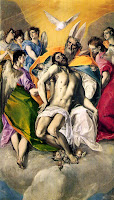







έγραψε ο
brexians
στις
08:09
2
σχολίασαν
![]()

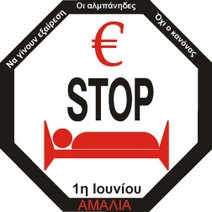
|
Hot-headed. You have strong will power and a good imagination. 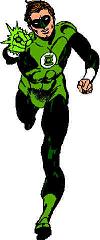 |